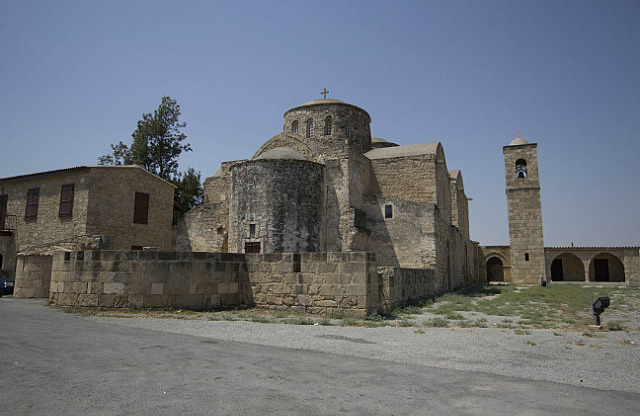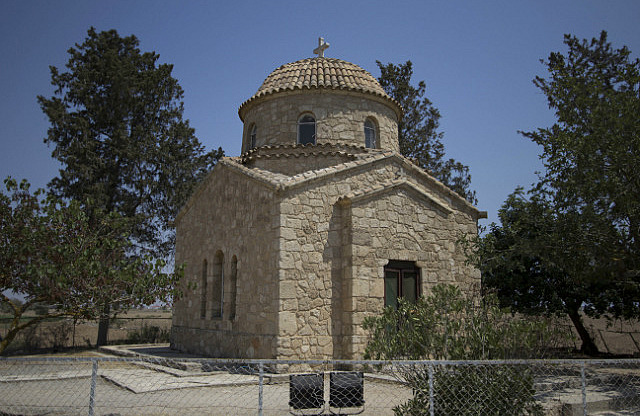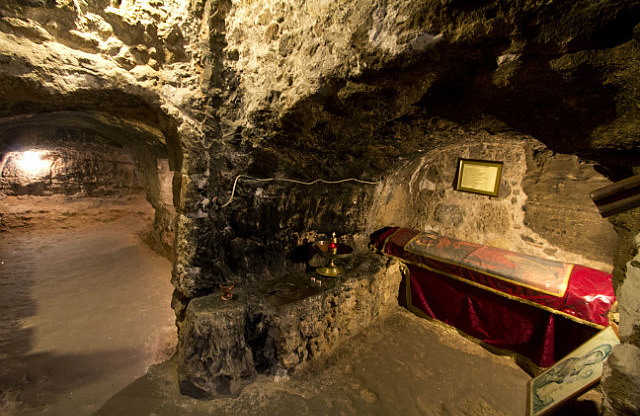Situated a little over 1 mile west of Salamis is the church and monastery and tomb of St. Barnabas.
The tradition of the Cyprian church from ancient writers was that Barnabas was born in Salamis, the son of a Jewish family descended from the tribe of Levi in Syria. While being educated in Jerusalem he witnessed the miracle-working power of Jesus in Bethsaida and in 33 A.D. he decided to convert to be a follower of the Lord. in 45 A.D. Barnabas joined forces with Saul of Tarsus (later to be called Paul) and John Mark and set off on a great preaching itinerary around the eastern Mediterranean area. As Barnabas continued the work of preaching the gospel in Salamis, he was captured in 57 A.D. by Jews who objected to his preaching in the synagogue and he was imprisoned, tortured and then stoned to death by Syrian Jews in Salamis. The Jews attempted to discard his body inconspicuously so as to not fall into the hands of his fellow-Christians was hidden in the marshland and later dumped into the sea. However, John Mark was witness to this barbaric action and he and Barnabas's followers retrieved his body and buried him with his "St. Matthew's" Bible (hand written copy of Matthew's Gospel) in a cave under a carob tree to the west of Salamis. The followers of Barnabas were persecuted by the Jews for his and they chased them to the northern coast of Cyprus where Barnabas' followers escaped to Egypt.
Thus, St. Barnabas's grave site remained unknown for 432 years until it was revealed to Archbishop Anthemios of Constantia (Salamis) in a dream. Anthemios went to the site and opened the cave and found the remains of St. Barnabas and St. Matthew's Bible. He took the remains and Bible to Emperor Zeno in Constantinople (Istanbul) who then declared the autonomy of the Cyprian church (Orthodox Church of Cyprus) and funded the building of a monastery at the burial site. The monastery was built in 477 A.D. but the present structure was built in 1756 by Archbishop Philotheos after the Ottoman rule. The excavations of the site have revealed the foundations of an early church with two empty tombs, believed to be that of St. Barnabas and Anthemios.





